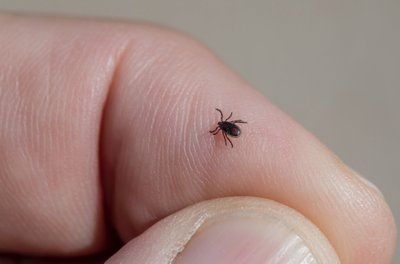The researchers also point out that due to the changing climate, the vectors that spread infectious diseases – both mosquitoes and ticks – are expanding the boundaries of their usual presence, spreading the relevant pathogens with them to new territories. For example, Lithuania has the highest incidence of tick-borne encephalitis in the world. Every year, there are many cases of tick-borne Lyme disease. In addition, quite recently, another tick species was discovered in Lithuania, which has not been found in our country until now, and which can also spread the tick-borne encephalitis virus.
Warns of outbreaks of mosquito-borne diseases in new territories
Professor Rachel Lowe, who heads the Global Health Resilience Group at the Barcelona Supercomputing Center, warns that outbreaks of mosquito-borne diseases due to warmer and wetter weather caused by climate change will spread to currently unaffected parts of northern Europe, Asia, North America and Australia in the next few decades, she writes. The Guardian.
According to Lowe, in the past, dengue was mostly found in tropical and subtropical regions, because in other places low night temperatures kill the insect larvae and eggs. Longer hot seasons and less frequent colds have made it the world’s fastest-growing mosquito-borne viral disease, which has also established itself in Europe.
The Asian tiger mosquito (Aedes albopictus), which transmits dengue fever, from 2023. established in 13 European countries: Italy, France, Spain, Malta, Monaco, San Marino, Gibraltar, Liechtenstein, Switzerland, Germany, Austria, Greece and Portugal.
According to the World Health Organization, over the past two decades, the number of dengue cases has increased eightfold – from 500 thousand to in 2000 to more than 5 million in 2019
Lowe pointed out that if the current trend of high carbon emissions and population growth does not change, the number of people living in areas where mosquito-borne diseases spread will double to 4.7 billion by the end of the century.
“Droughts and floods caused by climate change may increase transmission of the virus, and accumulated water is likely to become additional breeding grounds for mosquitoes.” Outbreaks can occur in those areas where people will be immunologically weak and public health systems will be unprepared,” said the researcher.
“Past outbreaks show the importance of assessing the risk of future vector-borne diseases and preparing for contingencies.” We need to anticipate disease outbreaks and take proactive steps to prevent disease,” she added.
Mosquito-borne diseases can be life-threatening
According to the National Center for Public Health, dengue fever is an acute mosquito-borne viral disease caused by the dengue virus. The disease is mainly spread in tropical and subtropical regions of the world – more than 100 countries in Africa, America, South and Southeast Asia, and the western region of the Pacific Ocean. Every year, tens of millions of cases of this disease are registered in the world, of which 20-25 thousand ends in death.
Up to 80 percent infections are asymptomatic. Dengue fever is characterized by fever, headache, eye sockets, joint and muscle pain, nausea, vomiting, maculopapular rash, minor hemorrhages.
Malaria is a serious, sometimes life-threatening disease caused by blood protozoa of the genus Plasmodium. This infection is transmitted by mosquitoes by feeding on human blood. Malaria is mainly spread in tropical and subtropical regions of Africa, Asia, South America. in 2022 249 million were recorded in the world. cases and 608,000 deaths.
The disease is manifested by high temperature, chills, headache, muscle pain, fatigue, nausea, vomiting, diarrhea may occur. Later, anemia and jaundice develop due to mass damage of erythrocytes. If the patient does not receive treatment, complications may develop, such as kidney failure, loss of consciousness, coma and death.
In Lithuania during the Second World War and after the war, local P. vivax malaria affected about 2 thousand people every year. population. in 1948 after the establishment of the Republican Antimalarial Station, with the efforts of doctors and biologists, in 1957 local malaria in Lithuania has been overcome. Malaria cases were not registered until 1963, but since 1964. cases of imported malaria are registered to this day.
What is the probability of mosquito-borne diseases spreading in Lithuania at the moment?
Arnoldas Pautienius, a scientist at the Institute of Microbiology and Virology of the Lithuanian University of Health Sciences (LSMU), LSMU Zoonoses Center, first explains that dengue fever and malaria are very different diseases – they are transmitted by different mosquito species, whose species diversity and geographical area of distribution differ, and therefore the possible future the risk of spreading diseases is not the same.
“Mosquitoes capable of transmitting the causative agent of dengue fever are mainly found in southern European countries – Spain, France, Italy, Balkan countries, including Greece, etc. Theoretically, in addition to the Southern European region, they can also be found in countries further north,” says the Tvari Lietuva interviewer.
However, according to him, the successful spread of mosquitoes that can transmit the dengue fever virus requires a very wide set of favorable events and factors – the interaction between the vector and the pathogen, favorable temperature, amount of precipitation, area of flooded meadows, level of urbanization, characteristics of human behavior, etc.
“Basically, the conditions on the European continent in general and in Lithuania in particular are not favorable for the spread of these diseases, especially compared to other regions of the world, so the rapid spread of the mentioned diseases, at least in the next few years, should not be expected,” he emphasizes.
The scientist also points out that it is very real that due to the increasing number of travelers, we will get more and more cases of imported diseases, when people become infected in endemic areas.
“However, for the reasons listed above, I would consider the probability that the mentioned diseases will form a local natural circulation cycle in the territory of Lithuania to be minimal,” emphasizes the scientist.
For her part, Rasa Bernotienė, the head of the entomology laboratory of the Nature Research Center, says that there is a possibility that the mentioned mosquito-borne diseases – malaria and dengue fever – could appear in Lithuania in the future.

“People often ask, are there already malaria mosquitoes in Lithuania?” It is. They lived here all the time and never left. Therefore, the spread of the disease only requires the pathogen and high air temperatures so that it can successfully complete its development in the mosquito’s body,” she says.
“Recently, the world has been changing very rapidly: climate changes, when every year exceeds the previous average temperatures, there is increased population mobility and migration, especially illegal when new pathogens enter new territories with people,” adds the scientist.
Any scenario is possible
On his part, A. Pautienius draws attention to the fact that it is very difficult to accurately forecast the distant future, especially in the field of infectious diseases.
“The spread of these diseases is caused by dozens of different factors, which, in addition to everything else, also affect each other, so various simulations and prognostic models that try to estimate the scenarios of the spread of infectious diseases are often wrong, and often completely inaccurate,” the scientist emphasizes.
“On the other hand, it has already been observed that due to the changing climate, the vectors that spread infectious diseases – both mosquitoes and ticks – are expanding the boundaries of their usual presence, spreading the relevant pathogens with them to new territories. So looking into the very distant future, any scenario is possible,” he adds.
Lithuania has the highest incidence of tick-borne encephalitis in the world: a new species of ticks has also been discovered
A. Pautienius also draws attention to the fact that we do not have detailed data on the species diversity of vectors, changes in population size, and the specifics of seasonal and geographical distribution, because this area is not well-financed in Lithuania.
However, according to him, it is clear that the situation in Lithuania is quite favorable for ticks.
“We have many of them and they are spread throughout Lithuania, including some urban areas. Considering the population, Lithuania has the highest incidence of tick-borne encephalitis in the world. Every year, a large number of tick-borne borreliosis (Lyme disease) cases are registered,” says the interviewer of “Tvari Lietuva”.

“Quite recently, the species Haemaphysalis concinna was discovered in Lithuania, which has not been found in Lithuania until now and which can also spread the tick-borne encephalitis virus. Therefore, there are few positive changes in this area so far,” he adds.
A. Pautienius, returning to the mosquito situation, notes that there are suspicions that the virus of West Nile fever – related to the tick-borne encephalitis virus – which causes a similar disease is only spread through mosquitoes, may be circulating in Lithuania.
“Currently, a project of the Lithuanian Science Council is being carried out, which aims to answer whether this suspicion has grounds,” he emphasizes.
Possible solutions: Scientists are certainly not powerless against these diseases
R. Bernotienė, head of the entomology laboratory of the Nature Research Center, says that vaccinations protect against some of the mentioned diseases. Also, according to her, the abundance of blood-sucking mosquitoes is being reduced in some areas, usually with the use of biological agents that have the least impact on other natural creatures.
“The most interesting are the ways to kill invasive mosquito species, bacteria and even genetic engineering are used here. In some countries, for example, in Croatia, the public and schoolchildren are involved in order to investigate whether invasive tiger mosquitoes are breeding in the surrounding territories”, says the interviewee of “Tvari Lietuva”.
In turn, LSMU researcher A. Pautienus says that usually successful control of the disease is caused by a set of measures.
“One of the most effective ways is to reduce the mosquito population. This is accomplished by paying a lot of attention to draining the floodplains where mosquitoes normally breed. Insecticide-treated nets and other chemical, biological and physical means are also purposefully used. At the same time, care is taken to ensure that residents use repellents. If there is a vaccine against the pathogen, vaccination is provided, and in case of illness, treatment is provided. “Basically, half a century ago, the aforementioned circulation of malaria in the south of Europe was curbed with such measures,” he states.
The scientist also notes that, for example, there is a vaccine against the causative agent of dengue.
“It is true that it is not the most effective, but a new generation vaccine is currently being developed,” assures A. Pautienius.
“One way or another, doctors and scientists are certainly not powerless against these diseases, so when the problem worsens, measures will inevitably be taken to solve it,” he adds.
Tags: Malaria dengue fever spreading Europe scientists kinds scenarios Lithuania









